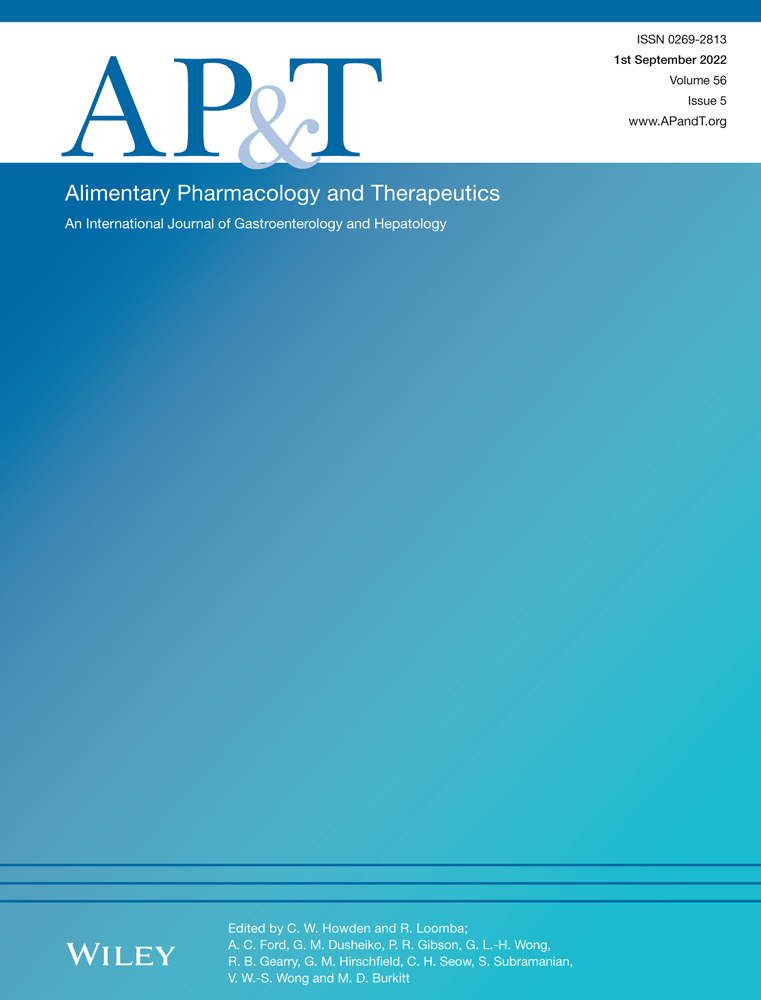Letter: to switch or not to switch, that is the question
Abstract
LINKED CONTENT
This article is linked to Bergqvist et al papers. To view these articles, visit https://doi.org/10.1111/apt.16927 and https://doi.org/10.1111/apt.17147
Editors,
We read with great interest the recent study by Bergqvist et al regarding switching from intravenous (IV) to subcutaneous (SC) vedolizumab treatment in patients with inflammatory bowel disease (IBD), its accpanying editorial and the authors' response.1-3 Efficacy and safety of SC vedolizumab has been demonstrated over placebo in both Crohn's disease and ulcerative colitis.4, 5 However, little is known about efficacy and safety of switching from IV to SC vedolizumab maintenance therapy. In the present study, the authors reported preserved therapeutic effectiveness (clinical and biochemical indices including faecal calprotectin) and safety with a low discontinuation rate and high patient satisfaction, after 6–12-months. Beyond the undeniable interest of the present study, some key questions remain unanswered.
Which patients could be considered good candidates for switching? Only patients in clinical and biochemical remission, or anyone who is willing? In the present study, around 80% of patients had normal faecal calprotectin. There was no change in clinical remission rate and faecal calprotectin level between patients on optimised and standard dosing of IV vedolizumab but the analysis was largely underpowered. Predominance of patients with deep remission was also observed in the TRAVELESS trial investigating switching experience in 124 patients with IBD.6 So, is it nonsensical to switch a patient with active disease? Conversely, could the switch be responsible for an increase in the vedolizumab concentration and, as a result, improved disease control?
When is the optimal timing for switching? In the present study, patients could be included as long as they had received at least three doses of IV vedolizumab. The median IV vedolizumab duration before switching was 26.1 (9.2–52.9) months. Patients from the TRAVELESS trial were treated with IV vedolizumab for a median of 24 (5–72) months.6 So, it is not clear whether duration of IV vedolizumab duration should be considered before switching for SC administration.
What is the optimal dosing of SC vedolizumab in patients with a preceding optimised IV vedolizumab regimen? In the present study, 20.2% received an optimised IV vedolizumab regimen. There was no difference in any clinical or biochemical outcomes between patients with standard and optimised regimens. So, it is not clear whether patients with optimised IV vedolizumab regimen should be treated with an optimised SC regimen.
Is there a paradigm pharmacokinetic shift between IV and SC vedolizumab? After switching, median serum vedolizumab trough levels at steady state increased in the entire cohort from 8.1 μg/ml (IQR 5.2–14 μg/ml) to 19.0 μg/ml (IQR 13.0–23.0 μg/ml), with similar results in either Crohn's disease or ulcerative colitis. Similar to the VISIBLE studies, serum vedolizumab trough levels were approximately twice as high during SC than IV therapy. However, it is not clear if some patients may experience a decrease in vedolizumab trough levels and, if so, in what proportion.
In conclusion, we need more real-world data on switching from IV to SC vedolizumab to help patients and physicians adequately and safely choose between these two formulations.
AUTHOR CONTRIBUTIONS
Antoine Martin: Conceptualization (supporting); data curation (supporting); writing – original draft (lead); writing – review and editing (lead). Clement Bresteau: Conceptualization (supporting); data curation (supporting); writing – original draft (lead); writing – review and editing (lead).
CONFLICT OF INTEREST
Aurelien Amiot received consulting fees from Abbvie, Hospira, Takeda, Gilead and Biocodex as well as lecture fees and travel accommodations from Abbvie, Janssen, Biocodex, Hospira, Ferring, Takeda and MSD. This author also received advisory board fees from Gilead, Takeda and Abbvie. None for the other coauthors.




